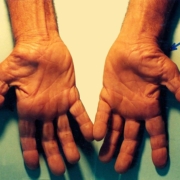5 Practical Tips for Easing Sciatica Pain at Home
5 Practical Tips for Easing Sciatica Pain at Home
Sciatica pain can feel like an unwelcome guest that overstays its welcome, disrupting yoru daily routine and diminishing your quality of life. Whether it’s the result of a herniated disc, spinal stenosis, or simply the wear and tear of everyday life, finding relief is essential. In this listicle, we’ll explore five practical tips that can help you alleviate sciatica pain right from the comfort of your home. From simple stretches to mindful practices, each tip is designed to empower you with strategies that promote healing and comfort. get ready to reclaim your mobility and ease that discomfort with these actionable insights!
1) Stretch It Out: incorporating gentle stretches into your daily routine can help alleviate sciatic pain. Focus on stretches that target the lower back, hips, and hamstrings to relieve tension and improve versatility. Simple moves like the seated spinal twist or the pigeon pose can work wonders
Incorporating gentle stretches into your daily routine can be a game-changer for alleviating sciatic pain. Focusing on areas such as the lower back, hips, and hamstrings can help relieve tension and improve flexibility. Here are some effective stretches to consider:
- Seated Spinal Twist: Sit on the floor with your legs extended. Bend one knee and place the foot on the outside of the opposite thigh. Twist your torso towards the bent knee, using your hand for support. Hold for several breaths before switching sides.
- Pigeon Pose: Start in a tabletop position and bring one knee forward, placing it behind your wrist. Extend the opposite leg straight back. Lower your torso towards the ground for a deep hip stretch. Hold for a few breaths and switch sides.
- Hamstring Stretch: While seated, extend one leg in front of you and bend the other knee. Reach towards your toes on the extended leg, feeling the stretch along the back of your thigh. Switch legs after a few breaths.
To ensure you are getting the most out of your stretching routine,consider creating a simple schedule to remind yourself to stretch daily. Consistency is key, and even a few minutes of stretching can make a important difference over time.Below is a simple table to help you track your stretching routine:
| Day | Stretch | Duration |
|---|---|---|
| Monday | Seated Spinal Twist | 5 minutes |
| Tuesday | Pigeon Pose | 5 minutes |
| Wednesday | Hamstring Stretch | 5 minutes |
| Thursday | Seated Spinal Twist | 5 minutes |
| Friday | Pigeon Pose | 5 minutes |
| Saturday | Hamstring Stretch | 5 minutes |
| Sunday | Rest Day | N/A |
2) Heat and Ice Therapy: Alternating between heat and ice can provide significant relief from sciatic pain. Apply a cold pack for 15-20 minutes to reduce inflammation, followed by a heating pad to soothe tight muscles. This combination can definitely help manage pain and promote healing
One of the most effective ways to combat sciatic pain is by utilizing the natural elements of heat and cold. Start your relief routine with a cold pack applied directly to the affected area for about 15-20 minutes. This initial step works wonders in reducing inflammation and numbing sharp pain. Make sure to wrap the cold pack in a thin towel to protect your skin. After the cold treatment, switch gears and reach for a heating pad.The warmth helps to relax tight muscles and improve blood circulation, which can promote healing and alleviate discomfort. Apply the heat for another 15-20 minutes, allowing your muscles to soak in the soothing warmth.
To maximize the benefits of this alternating therapy, consider creating a simple schedule that you can stick to throughout the day. Here’s a quick reference table to help you plan your sessions:
| time of Day | Therapy Type | Duration |
|---|---|---|
| Morning | Cold Pack | 15-20 minutes |
| Midday | Heating Pad | 15-20 minutes |
| evening | Cold Pack | 15-20 minutes |
| Before Bed | Heating Pad | 15-20 minutes |
This structured approach not only helps in managing pain but also encourages a routine that can aid in recovery. Remember to listen to your body and adjust the timing or duration as needed to find what works best for you!
3) Create a Supportive Environment: Ergonomics matter! whether you’re sitting at a desk or lounging on the couch,ensure that your workspace and seating arrangements support your spine. Use cushions or lumbar rolls to maintain proper posture and reduce pressure on the sciatic nerve
Creating a supportive environment is crucial for managing sciatica pain,as it directly impacts your posture and overall comfort. Start by evaluating your workspace; whether you’re working from home or relaxing on the couch, the right setup can make a world of difference. Consider investing in an ergonomic chair that provides adequate lumbar support to help keep your spine aligned. If a new chair isn’t in the budget, simple additions like cushions or lumbar rolls can effectively maintain proper posture and alleviate pressure on the sciatic nerve.
Along with your seating arrangements, pay attention to your desk height and screen positioning. Your computer monitor should be at eye level to prevent slouching, while your keyboard and mouse should be positioned to allow your arms to rest comfortably at your sides. Here are some tips to optimize your space:
- Adjustable Desk: Consider using a sit-stand desk to alternate between sitting and standing.
- Footrest: use a footrest to keep your feet flat and support your lower back.
- Breaks: Take regular breaks to stretch and walk around, reducing stiffness and pressure.
4) Stay Active with Low-impact Exercises: Engaging in low-impact activities like walking, swimming, or cycling can help keep your body moving without exacerbating pain.Aim for 30 minutes of activity most days to strengthen your back and core muscles, which can provide better support for your spine
Engaging in low-impact exercises is a fantastic way to keep your body active while being gentle on your joints and spine. Activities such as walking, swimming, and cycling can be notably beneficial for those experiencing sciatica pain. These exercises not only promote circulation but also help in strengthening the muscles that support your back. Aim for at least 30 minutes of activity most days; even short sessions can accumulate to significant benefits over time. You might consider breaking it down into smaller increments—like three 10-minute walks throughout the day—to make it more manageable.
To further enhance your routine,consider incorporating the following low-impact exercises into your weekly schedule:
- Walking: A simple yet effective way to keep your body moving.
- Swimming: The buoyancy of water reduces stress on your spine while providing resistance.
- Cycling: Whether on a stationary bike or outdoors, cycling is great for building endurance.
- Yoga: Gentle stretches can improve flexibility and relieve tension in the back.
To help you stay organized,here’s a simple weekly exercise schedule:
| Day | Activity | Duration |
|---|---|---|
| Monday | Walking | 30 minutes |
| Tuesday | swimming | 30 minutes |
| Wednesday | Cycling | 30 minutes |
| Thursday | Yoga | 30 minutes |
| Friday | Walking | 30 minutes |
| saturday | Swimming | 30 minutes |
| Sunday | Rest | – |
5) Mindfulness and Relaxation Techniques: Stress can amplify pain,so incorporating mindfulness practices like meditation,deep breathing,or yoga can be beneficial. These techniques not only promote relaxation but also help you manage pain more effectively by shifting your focus away from discomfort
Incorporating mindfulness practices into your daily routine can be a game-changer for managing sciatica pain. Techniques such as meditation, deep breathing, and yoga not only help to promote relaxation but also serve as powerful tools to shift your focus away from discomfort. By taking just a few moments each day to engage in these practices, you can cultivate a sense of calm that reduces the perception of pain. As a notable example, consider setting aside 10-15 minutes for a guided meditation session, where you can visualize a peaceful landscape while concentrating on your breath. This mental escape can significantly alleviate stress,which is known to exacerbate pain sensations.
Yoga, in particular, offers a dual benefit: it enhances flexibility and strengthens the muscles that support your spine. Simple poses such as Child’s Pose, Cat-Cow, and Seated Forward Bend can be especially helpful in easing tension in the lower back and hips. To get started, you might want to follow a beginner’s yoga video specifically designed for sciatica relief. Additionally, practicing deep breathing exercises can help lower your heart rate and promote a state of relaxation.Consider this simple technique: inhale deeply through your nose for a count of four, hold for four, and exhale slowly through your mouth for a count of six. This rhythmic breathing can ground you and provide immediate relief from stress and pain.
Closing Remarks
As we wrap up our exploration of practical tips for easing sciatica pain at home,remember that your journey to relief is uniquely yours. Each tip offers a stepping stone toward comfort, allowing you to reclaim your daily activities and embrace life with renewed energy. Whether it’s through gentle stretches, mindful posture, or the soothing touch of heat and cold, small changes can lead to significant improvements.
Always listen to your body and consult with a healthcare professional if your pain persists or worsens.By taking proactive steps and nurturing your well-being, you can pave the way for a more comfortable tomorrow. Here’s to finding relief and moving forward with confidence!










Leave a Reply
Want to join the discussion?Feel free to contribute!